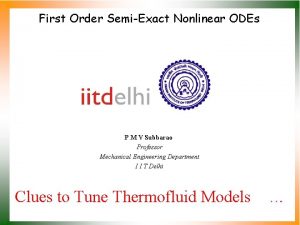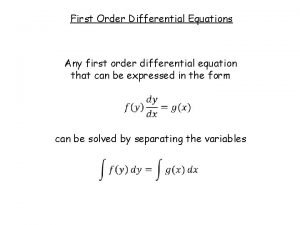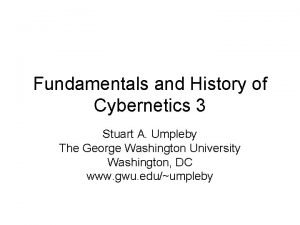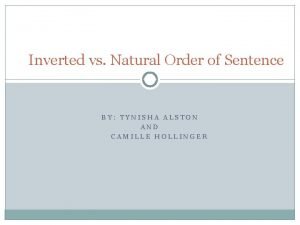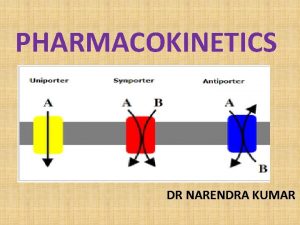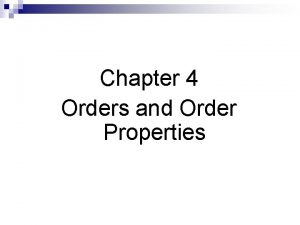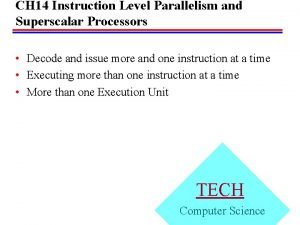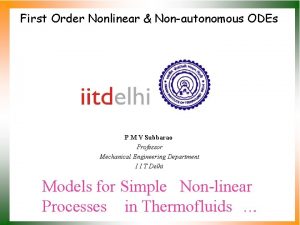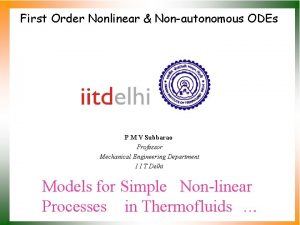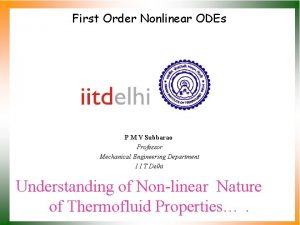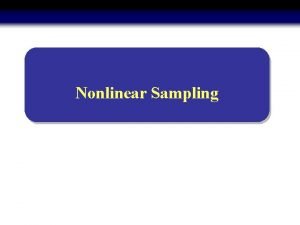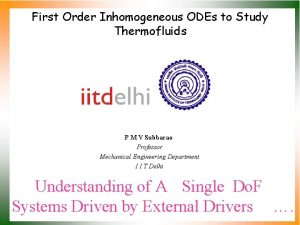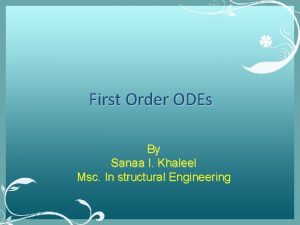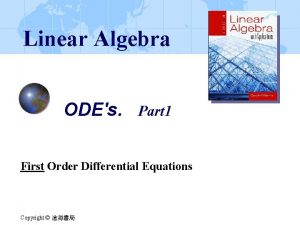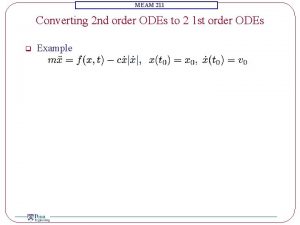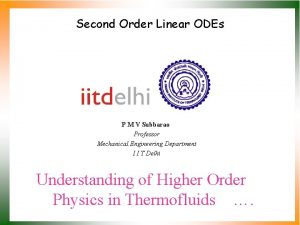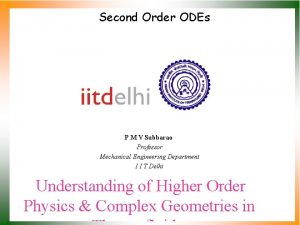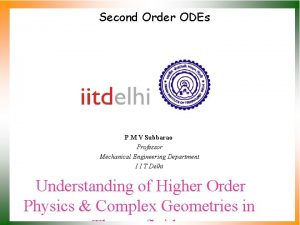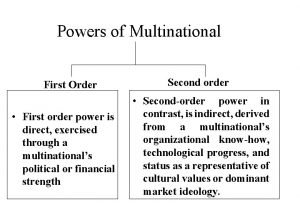First Order SemiExact Nonlinear ODEs P M V


















- Slides: 18

First Order Semi-Exact Nonlinear ODEs P M V Subbarao Professor Mechanical Engineering Department I I T Delhi Clues to Tune Thermofluid Models ….

Non-Exact Equations • A general FO ODE of the form is called as a non-exact ODE, when • • A general linear equation is not always exact. But we somehow still managed to solve it. By multiplying both sides by the “integrating factor”. Sometimes a non-exact differential equation can be rewritten as an exact equation. • One way this could happen is multiplying the differential equation by an appropriate function.

Semi-Exact Differential Equations • A semi-exact differential equation is a non-exact equation that can be transformed into an exact equation after a multiplication by an integrating factor. • Consider a non-exact equation: • It is sometimes possible multiply it by another function of x and/or y to obtain an equivalent equation which is exact. • That is, one can sometimes find a function (y, x) such that Such a function (y, x) is called an integrating factor.

Example: Non-Exact L FO ODE As , a general linear equation is not exact.

Example: Non-Exact NL FO ODE As , this equation is not exact

Test for Semi-Exact NL FO ODE Let us multiply both sides of the differential equation by • This is not only exact, but is also separable. • The general solution is In certain cases, it is easy to find an integrating factor. In general, the problem of finding an integrating factor (x, y) for a given differential equation is very difficult.

General L ODEs are Semi-Exact FO ODE Let us multiply the linear equation by , a function , which depends only on x. Note that , P, Q and dependent only on x.

General L ODEs are Semi-Exact L FO ODE Let us look for a particular function, , that makes the previous equation exact. Develop a condition for exactness as is an integrating factor: Therefore, the FO LODE is semi-exact, and the function that transforms it into an exact equation is

Theorem A: FO non-exact NL ODE If the equation is not exact, with , the function g(y, x) 0, and where the function h defined as depends only on x, not on y, then the equation below is exact. where H is an antiderivative of h,

Remarks • The function (x) = e. H(x) is called an integrating factor. • Any integrating factor is solution of the differential equation Multiplication by an integrating factor transforms a non-exact equation into an exact equation This is exactly what happened with linear equations.

Verification Proof of Theorem There is a need to verify that modified equation , is exact.

Verification Proof of Theorem Use definition of h from theorem, and substitute in above equation This establishes the Theorem.

Proof of theorem Semi-Exact NL FO ODEs – type A Equations with Integrating Factors that depend only on x. Consider a general first order ODE Let us suppose that there exists an integrating factor for this equation that depends only on x. If (x) is to really be an integrating factor, then must be exact; i. e. ,

Semi-Exact NL FO ODEs – type A • Carrying out the differentiations (using the product rule, and the fact that (x) depends only on x), we get Now if is dependent only on x (and not on y), then necessarily d /dx depends only on x. Thus, the self consistency requires the right hand side of above equation to be a function of x alone. Let us presume this to be the case and set

• This is a first order linear differential equation! • The general solution of above equation is This formula gives us an integrating factor and valid only depends only on x.

Semi-Exact NL FO ODEs – type B Equations with Integrating Factors that depend only on y. Consider again general first order ODE Let us suppose that there exists an integrating factor for this equation that depends only on y.

Example : NL Semi-exact FO ODE • Find all solutions y to the differential equation

Example : NL Semi-exact FO ODE Then, multiplying the original differential equation in by the integrating factor =x, to obtain
 Semiexact
Semiexact First order odes
First order odes 1st order 2nd order 3rd order neurons
1st order 2nd order 3rd order neurons Examples of a ode
Examples of a ode Horatian ode example
Horatian ode example Odės pavyzdžiai
Odės pavyzdžiai Ode 4
Ode 4 Sonnet ode
Sonnet ode What are sonnets, lyrics, ballads, haikus and odes
What are sonnets, lyrics, ballads, haikus and odes She dwells with beauty beauty that must die
She dwells with beauty beauty that must die First-order change and second-order change examples
First-order change and second-order change examples First order cybernetics and second order cybernetics
First order cybernetics and second order cybernetics Inverted order sentence
Inverted order sentence Personal selling plan
Personal selling plan Antagonistic effect
Antagonistic effect Difference between 1st order and zero order kinetics
Difference between 1st order and zero order kinetics Law is order and good law is good order
Law is order and good law is good order Order/properties-order
Order/properties-order In order issue in order completion example
In order issue in order completion example
